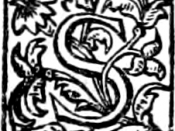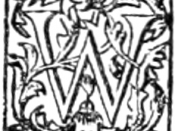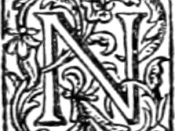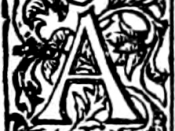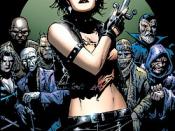Question: An analysis of the contrasts made between, The time traveller, Elois and Morlocks, in the Time Machine by H.G Wells, During this SSL I intend to consider the links made by Wells between The time Traveller. Elois and the Morlocks. This linkage comes from the question that I believe is being suggested by Wells in the novel, Where do we draw the line between the primitive beast and the supposed modern man? In H.G. Wells novel The Time Machine, I believe that Wells successfully delivers a commentary on the battling forces within mankind. These battling forces being man's primitive being versus his civil being. Through the presentation of a time traveller's experiences along a journey into the future, This question which I believe is being suggested is analysed through the presentation of two new races of humanity, the Elois and Morlocks, who have emerged from the elite and working class societies in Wells' novel.
Through the usage of such metaphors as The Sphinx, Wells supports his theory that there is a primitive nature represented by the Morlocks and the latest version of the supposed civil side symbolised by the Elois, the human being. In this novel the Time Travellers character is a representative of all mankind, in search of a means of escaping his primitive side. In the end, instead of escaping his primitive side, he finds out just how primitive he really is. Wells therefore does not name this main character, allowing the readers an opportunity to identify themselves with him. I believe that this technique is very effective as I found myself coming to identify with the characters in this novel. The character of the Time Traveller is identifiable with both the Morlocks and Elois cultures. The time traveller associates himself with the Elois and their civilised nature quite often throughout his adventure. Many of his characteristics and actions are quite similar of the Elois. For example the saving of the flowers picked by Weena in his jacket pocket. Also his Eloi like nature is displayed when he lights the matches for the enjoyment of the Elois. In the eyes of the time traveller the Elois are the more humane of the two cultures which draws him to them. This is when he says, "However great their intellectual degradation, the Eloi and kept to much of the human form not to claim my sympathy, and to make me perforce a sharer in their degradation and their Fear."ÃÂ(Pg. 72) However we see that the time traveller is also representative of the Morlocks at the closing of his journey where he leaves Weena to be eaten by the Morlocks or to be killed by the fire.
The Time traveller tries to find a separating factor between the two kinds of people, yet he later realises that there is no separating factor. However we on page 74 see the Morlocks side of the time traveller, when he goes on a killing spree. "and I rejoined her with a mace in my hand more than sufficient, I judged, for any Morlock skull I might encounter. And I longed very much to kill a Morlock or so."ÃÂ Through this quotation I believe that there is the creation of another grey area, in the character of the Time Traveller is he and Elois or a Morlock or is the human a mixture between them both.
They long for a taste of his blood just as he longs for the taste of theirs. His reference to them as being his descendants shows that he is well aware of the linkage between the Morlock and himself. Here I thought Wells to be drawing the line that separates the civil human being from the primitive. Wells believed that this line of distinction actually lied in the humane treatment of one another. At the moment the time traveller embarks upon his Morlock killing spree he crosses that line. He is now being controlled by his primitive instincts over his more civil nature.
The time traveller also tries to disassociate himself from the two cultures as much as possible. The repulsion showed on his part for the Morlocks is in an attempt to escape his own savage nature. It is a display of the time traveller's fear of his own primitive being. He describes them as being "filthy cold to the touch"ÃÂ (page 64). At one point he says that he shudders at the thought of how they must have already examined him. The fact of the matter is that he has been doing much more examining of the two cultures than they of he, sizing up of potential opponents that is commonplace among the primitive.
"But there was an altogether new element in the sickening quality of the Morlocks - a something inhuman and malign. Instinctively I loathed them. Before, I felt as a man might feel who had fallen into a pit: my concern was with the pit and how to get out of it. Now I felt like a beast in a trap, whose enemy would come upon him soon. " (Page 68) Here, the time traveller, from my view point, identifies the inhumane qualities of the Morlocks, but more importantly he identifies himself as changing from a man to a beast caught in a trap. Here Wells is summarising the transformation that the time traveller has undergone while in the future. I came to the conclusion that, he no longer identifies himself as being a human caught in a predicament, but as a beast in a fight for survival.
In my opinion, his fear of the lack of intelligence shown on the part of the Elois seemed to me to be most apparent. To me it was clear that his mentioning of their lack of intelligence, short attention spans, and their lack of gratitude were some examples of reasons why he did not want to be considered similar to the Elois as he did earlier in the book. He outright attempts to turn his back on the Eloi in the following point in the novel: "Then I tried to preserve myself from the horror that was coming upon me, by regarding it as a rigorous punishment of human selfishness. Man had been content to live in ease and delight upon the labours of his fellow man, had taken necessity as his watchword and excuse, and in the fullness of time Necessity had come home to him. I even tried a Carlyle like scorn of this wretched aristocracy in decay. "(Page 71) I believe that The time traveller is trying to disassociate himself from the Eloi completely. He uses the argument that they deserve their fate because of their ill treatment of the Morlocks. The denouncement of his Eloi similarities led me to see him as becoming a completely primitive being.
In The Time Machine Wells uses the repetition of the symbol of the Sphinx's. I believe he does this, so as to create a linkage between, the primitive, Sphinx's, but the marvel of MODERN beauty. An example of this exists on pages 43-44 where my statement is clearly backed up; "It was of white marble, in shape something like a winged sphinx, but the wings, instead of being carried vertically at the sides, were spread so that it seemed to hover. " In conclusion, H.G.Wells allows the reader to make contrasts between the three main characters in the novel The Time Machine. Wells does this by associating the main character (The Time Traveller) with the other two species, in the novel. I believe that this allows the reader to become involved in the novel as I did. I found this book to be thought provoking, and even found myself making comparisons between the Morlocks and Elois and I. After analysing, the contrasts made between the Time Traveller, Elois and the Morlocks. I believe that Wells successfully, allows the reader to consider their primitive side as the Time traveller did between himself the Elois and Morlocks.
